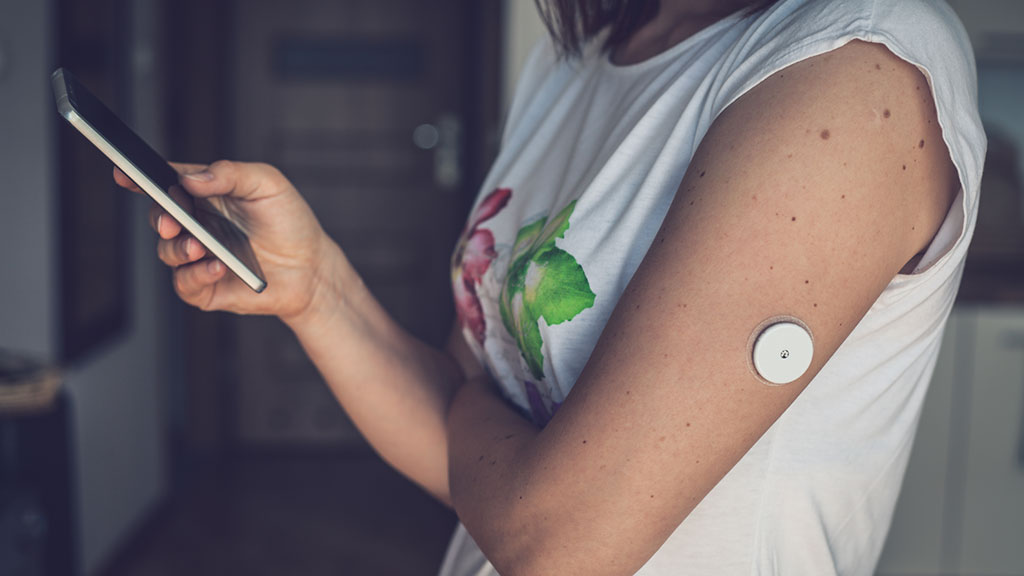
My parents were one of the original families that brought JDRF to Canada. I was 13 years old in 1971 when my brother David was diagnosed with type 1 diabetes (T1D), and I was diagnosed at 15 years of age. My parents felt there wasn’t enough going on at the time regarding T1D research. It was hard to even get information on what T1D even was – it was called the ‘sugar disease’ in the encyclopedia. When my brother David was diagnosed he went to the hospital, I thought he was going to die. He became a functioning diabetic and the whole family got behind him. So, when I was diagnosed, mine was caught very early. I was able to diagnose myself on his urine test strip. I went to the hospital and was formally diagnosed and went on injection (insulin) immediately.
My parents made it so that we had to figure out how to manage our diabetes day-to-day and live our lives. We played sports, hockey, soccer etc. It was never an issue that we wouldn’t be as active as possible, while still being very aware of our own bodies and our diabetes management.
While this was going on, our parents were working behind the scenes to raise money and awareness for T1D cures.
I know that they never believed that 50 years later, we would still be struggling to find a cure. The management has improved, the technology has improved, but we are still looking for the cure.
Gerald Josephson and Mitch Garfinkle met with JDRF volunteers in NYC, and then brought JDRF to Montreal, in 1974, then the Shiff family and the Oelbaums in Toronto a few years later. These initial families, including mine – were all about the cure. Whatever money was raised would go to research labs to help find the cure. Every decade since, there has been a lot of hope, a lot of progress, but still not a cure. Still, I believe still that there will be a cure for diabetes. I know there will be.
Can you share what T1D management was like 50 years ago?
I’ve seen everything since the early 1970s: MDI (multiple daily injections), slow acting, fast acting (insulins), we were weighing food at the restaurants as kids. We got rid of Frosted Flakes and ate Special K, and this was a complete contribution as a family. We all changed our diets and eating habits. There was little official guidance to follow. Being social as teenagers wasn’t the easiest, but my parents were insistent that we didn’t whine and complain but make it work, so we were open as a community. My friends all knew what we knew as diabetics, they knew how to help with lows (low blood glucose), there was always a glass of juice available.
I was patient #20 with a (insulin) pump when I was 21. I was the first outpatient of Dr. Elissa Schiffman from the Montreal Children’s Hospital. The size of the pump was thick and about the size of a tablet, I wore it under my shirt, but it was a continuous infusion. I would give myself boluses (short-acting insulin that you get at mealtimes) before eating. But it gave me the freedom to manage my lifestyle while managing my diabetes in a better way for myself. The pump gave me freedom to eat when I wanted, and this was a game changer for me. Not having to eat on a regimented schedule every day made a huge difference. It was a huge plus for me. I was monitored, but it essentially acted the same as a pump today, just bigger and with slightly less functionality.
I’ve been on a continuous glucose monitor, which is also a big change. This lets you know where you are (blood glucose levels) throughout the day. You know the direction your sugar levels are going, high or low. You still must be involved and watch them; you can’t stop paying attention. But the highs and lows are so much more manageable and (the CGM) allows you to live with more confidence and it makes management a lot easier.
My son was diagnosed at 9 years old, and he’s now 35 years old. My son being diagnosed was the most painful experience for me. Like my brother and me, he must live as normal a life as possible, we make it work as a family. I know where his gene came from, I have guilt because of what he has to deal with as someone with T1D. One thing I want people to understand is that it’s not only ‘diabetes’, it’s not only managing your blood glucose and insulin. It’s a serious, degenerative disease with risk of significant complications. But the hope is always there that it will be cured in my lifetime.
What innovation or research update has excited you the most as someone with T1D?
Being more able to follow what’s happening in research, you can go online and get up-to-date information on new approaches and management. But arguably, we are not that much further ahead. I went from urine sampling, to testing, to blood glucose testing, and you can adapt quicker. These are tweaks though; the disease is still the same just better managed with technology.
I’m a little bit frustrated that although the reality of where we are is better, I am impatient. I am hoping that the stem cell technology discovered in the 90s will make a much more significant impact. Today’s T1D research has a lot of things that are branched out into other areas, like mental health, and other fields, this is all great – but there are no changes that have helped me personally, in that I still have type 1 diabetes.
We must give people hope. A person with T1D today can live quite a normal life. With continuing technology and science, this will continue to make the life of a diabetic easier and more like that of other healthy individuals.
What would a cure look like to you?
No more testing, no need for insulin. I could live with that. I would like to wake up in the morning and not worry about where my glucose levels are, and not have to ask myself: do I need to eat, or not eat, or take more or less insulin.
To be able to eat a meal without calculating the carbs would be freedom. The day-to-day is not that hard for me anymore, but I worry about the long-term effects as I age. I don’t want to worry about longevity or long-term complications. I want to enjoy my life actively as I have. I do live every day like I don’t know what tomorrow will bring. We can only control today.
For most of us, living with T1D is not such a bad thing, we learn to manage the best we can but I feel sad when I hear of others who are diagnosed. So, if we can inoculate (against it as a form of prevention), that would be OK for me. I wouldn’t get a cure, but it would mean nobody else would ever have to live with T1D.
I’ve been very lucky. I have terrific support, my wife, kids, friends. I just wish they could be supporting me for other reasons other than T1D.
What has JDRF meant to you and your family?
In different areas, different emotions. The idea of a family of people within the JDRF organization working towards a common goal – a cure – is meaningful to me. It’s been very emotional. The people who I met when I was younger taught me that I had to become somewhat more responsible and mature as a teenager living with T1D. So having that support was terrific, and I want to do the same for others. I’m not looking for a thank you of any kind, just the ability to help others that find themselves with diabetes and are looking for a cure.
I really, truly just want a normal life. So that I don’t have to deal with diabetes. That is my hope for the future. If it’s an implant, or injection, whatever it is – I’ll take it and I go back to how I was before diabetes. Realistically, I don’t know what the future holds for me, but hoping is good. Hope is powerful. We will continue our fight to find a cure!
JDRF Canada is so grateful to Jimmy Garfinkle for his most recent contribution, matching donations for our Spring Flash Campaign in March, up to $50,000 to support T1D research.
Donate



